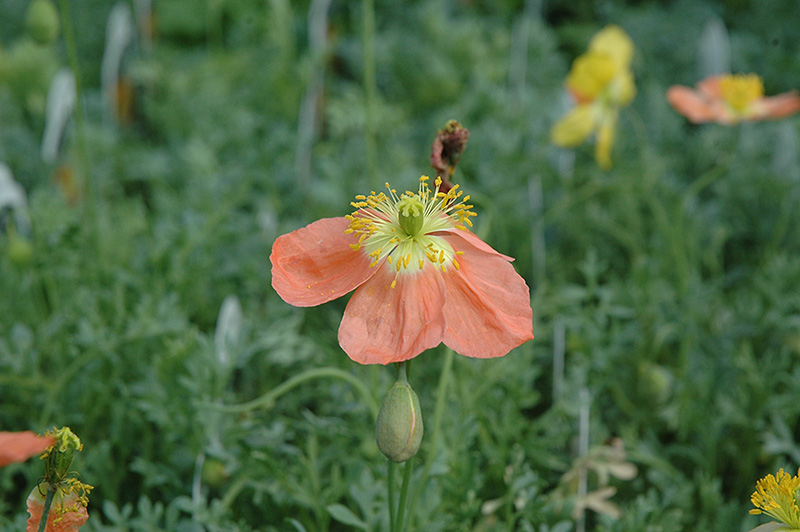Plant Height: 4 inches
Flower Height: 12 inches
Spacing: 6 inches
Sunlight:
![]()
![]()
Hardiness Zone: 2b
Other Names: Papaver alpinum
Description:
Small clump-forming self-seeding plants that offer a display of color from creamy-white to yellow and thorugh the hot oranges with small silver dollar sized flowers, exquisite in a rock garden
Ornamental Features
Alpine Poppy features dainty orange round flowers with yellow eyes at the ends of the stems from early spring to early summer. The flowers are excellent for cutting. Its attractive deeply cut ferny leaves remain grayish green in color throughout the season.
Landscape Attributes
Alpine Poppy is an open herbaceous perennial with tall flower stalks held atop a low mound of foliage. It brings an extremely fine and delicate texture to the garden composition and should be used to full effect.
This plant will require occasional maintenance and upkeep, and should only be pruned after flowering to avoid removing any of the current season's flowers. Deer don't particularly care for this plant and will usually leave it alone in favor of tastier treats. Gardeners should be aware of the following characteristic(s) that may warrant special consideration;
- Self-Seeding
Alpine Poppy is recommended for the following landscape applications;
- Mass Planting
- Rock/Alpine Gardens
- General Garden Use
Planting & Growing
Alpine Poppy will grow to be only 4 inches tall at maturity extending to 12 inches tall with the flowers, with a spread of 8 inches. When grown in masses or used as a bedding plant, individual plants should be spaced approximately 6 inches apart. It grows at a fast rate, and under ideal conditions can be expected to live for approximately 5 years. As an herbaceous perennial, this plant will usually die back to the crown each winter, and will regrow from the base each spring. Be careful not to disturb the crown in late winter when it may not be readily seen! As this plant tends to go dormant in summer, it is best interplanted with late-season bloomers to hide the dying foliage.
This plant does best in full sun to partial shade. It prefers dry to average moisture levels with very well-drained soil, and will often die in standing water. It is not particular as to soil type or pH. It is somewhat tolerant of urban pollution, and will benefit from being planted in a relatively sheltered location. This is a selection of a native North American species.


